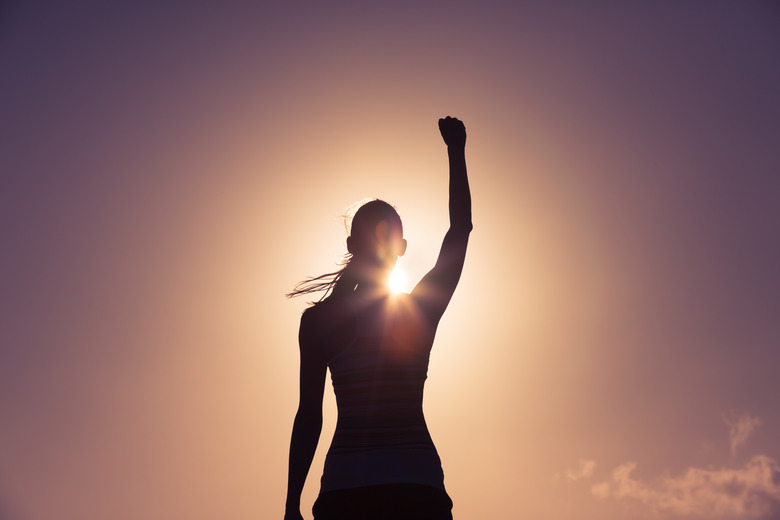What Are The 10 Major Body Systems?
The major systems of the body help the body to move, think, protect itself and function. Some of these systems, like the skeletal and muscular systems, work closely together to help the body operate. But the muscular system is also a vital part of the circulatory system because cardiac muscle tissue makes the heart beat as it should.
TL;DR (Too Long; Didn't Read)
The body contains 11 major organized structures: the circulatory, respiratory, skeletal, muscular, digestive endocrine, nervous, reproductive and integumentary system – which includes the skin, hair, nails, sweat and oil glands.
Framework and Movement
Framework and Movement
The muscles of the body, comprised of skeletal, visceral and cardiac produce both voluntary and involuntary movement. Skeletal muscles help a person walk or run, smooth muscles, smooth muscles, or involuntary muscles, help contract hollow muscles which include:
- the stomach
- intestines
- bladder
- uterus
The cardiac muscle, found only in the heart, ensures the heart pumps blood throughout the circulatory system.
Breathing, Circulation and Immune Function
Breathing, Circulation and Immune Function
The circulatory system includes the heart, blood vessels and arteries and distributes nutrients, hormones, and oxygen to the entire body. It also helps propel solid waste from the digestive system.
The lymphatic system helps to block diseases, toxins and foreign proteins from affecting the body. The lymphatic system includes lymph nodes, lymph vessels, T cells and B cells.
The respiratory system includes the lungs, the trachea and the nose, that collect oxygen from the air and to dispel carbon dioxide from the body.
Food Consumption and Fluid Expulsion
Food Consumption and Fluid Expulsion
The digestive system breaks down food and turns into energy for the body. The digestive system includes the mouth, the esophagus, the stomach and the large and small intestines.
The excretory system dispels extra water, toxins and cellular wastes from the body. The excretory system includes the bladder, the kidneys, the ureters and the urethra.
Communication and Reproduction
Communication and Reproduction
The central nervous system incorporates the brain, the spinal cord and the nerves and is used to transmit electrical impulses to the entire body. The nervous system produces thought, initiates voluntary and involuntary movement and chemically coordinates the processes of all the other body systems.
The reproductive system creates new human life. Male organs include the penis, testes and seminal vesicles and female organs include mammary glands, ovaries, oviducts, the uterus and the vagina.
Hormones -- Chemical Messages
Hormones — Chemical Messages
The endocrine system carries chemical messages throughout the body from specific gland excretions, which includes hormones. The endocrine system controls complex mental processes like sexual drive and physical effects throughout the entire body, such as increased heart rate or hair growth. The endocrine system includes organs such as the pituitary gland, the adrenal gland, the hypothalamus, the thyroid and the pancreas.
Skin, Hair, Nails, Sweat and Oil Glands
Skin, Hair, Nails, Sweat and Oil Glands
The largest organ of the body, the skin is part of the integumentary system that also includes oil and sweat glands, nails and hair. The skin, composed of three layers, the epidermis, dermis and subcutaneous tissues protects the body's inner tissues and internal organs, helps to retain bodily fluids, protection from infectious bacteria and viruses. The sweat and oil glands help the body to maintain a life-sustaining bodily temperature and excrete waste materials by sweating. Hair protects the skin from ultraviolet radiation, while finger and toenails protect against injury and provide support for the associated digits.
Cite This Article
MLA
Rittichier, Krystyna. "What Are The 10 Major Body Systems?" sciencing.com, https://www.sciencing.com/10-major-body-systems-8122332/. 25 April 2018.
APA
Rittichier, Krystyna. (2018, April 25). What Are The 10 Major Body Systems?. sciencing.com. Retrieved from https://www.sciencing.com/10-major-body-systems-8122332/
Chicago
Rittichier, Krystyna. What Are The 10 Major Body Systems? last modified March 24, 2022. https://www.sciencing.com/10-major-body-systems-8122332/
